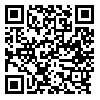BibTeX | RIS | EndNote | Medlars | ProCite | Reference Manager | RefWorks
Send citation to:
URL: http://ijme.mui.ac.ir/article-1-4182-en.html
Introduction: Researchers have realized that academic burnout has seriously negative impact on learning and promotion of learning efficiency which hinders universities from achieving their educational missions and goals. This study examined the factors affecting academic burnout among students of Shiraz University of Medical Sciences and Payam Noor University through a comparative casual model.
Methods: This descriptive correlational study was carried out on a sample of 174 students of Shiraz University of Medical Sciences and 260 students of Shiraz Payame Noor University; subjects were selected based on Cochran Formula through simple random sampling. Data collection tool was a battery of questionnaires consisting of Maslach Burnout Inventory-Student Survey, Elliot and McGregor achievement goal scale, Midgley self-efficacy scale and Schaufeli and Bakker academic engagement scale. The data were analyzed in Lisrel software using path analysis.
Results: Findings showed significant differences between the two universities in terms of the impact of academic goal orientation (t=2.76, p=0.01), academic self-efficacy (t=2.18, p=0.05) and academic engagement (t=2.60, p=0.01) on academic burnout. It was also found that academic goal orientation had significant indirect effects on academic burnout through academic self-efficacy and academic engagement. In the two samples, Findings indicated that the proposed conceptual model had a good fit
Conclusion: Given the increasing trend of academic burnout in academic settings and the decisive role of academic goal orientation, academic self-efficacy and academic engagement, universities should provide an appropriate environment to enhance self-efficacy and change mastery goal orientation in students’ learning and therefore, pave the way for promoting learning and reducing academic burnout.
Received: 2016/06/28 | Accepted: 2016/12/12 | Published: 2017/04/16 | ePublished: 2017/04/16
| Rights and permissions | |
 |
This work is licensed under a Creative Commons Attribution-NonCommercial 4.0 International License. |




